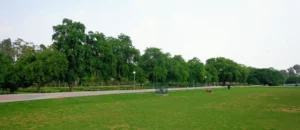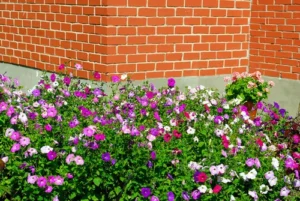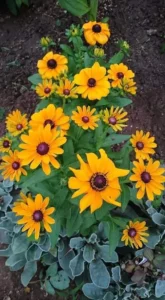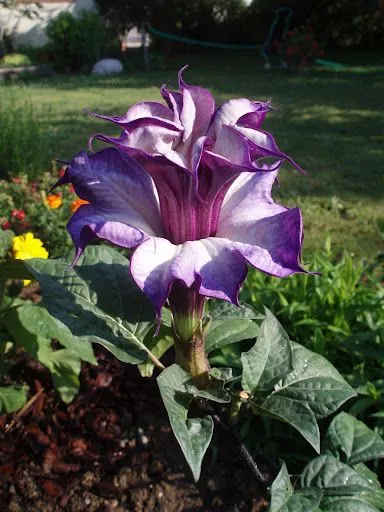Lavender Flower Gardening
Lavender blossoms and soothing fragrance
Lavender flowers, with their graceful spikes of purple blossoms and soothing fragrance, have enchanted gardeners and herbalists for centuries. From their ancient origins to their modern-day uses, lavender represents more than just a beautiful plant; it is a symbol of tranquility, healing, and timeless elegance. The journey of growing lavender in your garden is as rich and varied as the plant itself, offering a blend of historical significance, practical gardening techniques, and creative possibilities.
The story of lavender begins in the Mediterranean region, where it has been cultivated for over two millennia. Ancient civilizations, including the Romans and Greeks, revered lavender not only for its beauty but also for its medicinal properties. The name “lavender” itself derives from the Latin word “lavare,” which means “to wash.” This reflects the plant’s historical use in baths and rituals to cleanse both the body and the spirit. Lavender was a staple in the baths of Roman citizens, where it was used to scent the water and provide a relaxing, aromatic experience. The Romans also used lavender in cooking and as a natural insect repellent, demonstrating the plant’s versatile uses even in ancient times.
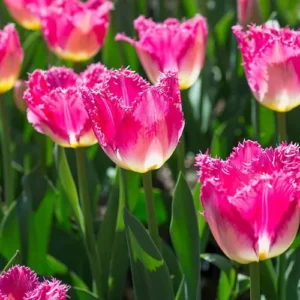
As the centuries passed, lavender’s appeal spread throughout Europe.
As the centuries passed, lavender’s appeal spread throughout Europe. During the Middle Ages, lavender was cultivated in monastic gardens where monks grew the plant for its medicinal properties. Lavender was believed to have a range of therapeutic benefits, from alleviating anxiety to improving sleep. The dried flowers were used in sachets and pillows, and the essential oil was employed in herbal remedies and ointments. Lavender’s role in these historical contexts highlights the plant’s significance beyond mere decoration, reflecting its deep connection to human wellness and daily life.
In the Renaissance period, lavender continued to be a symbol of refinement and grace. The plant was featured in the gardens of the wealthy and the elite, admired for its elegant appearance and soothing scent. The lavender-filled gardens of this era were places of relaxation and contemplation, where people could escape the demands of daily life and immerse themselves in nature’s beauty. This tradition of using lavender for relaxation and enjoyment has persisted into modern times, with lavender gardens serving as peaceful retreats for contemporary gardeners.
Today, lavender remains a beloved choice for gardeners around the world.
Its popularity is driven by a combination of its aesthetic appeal, its practical uses, and its ease of cultivation. Lavender’s striking purple flowers and silvery foliage make it a standout feature in any garden, while its versatility ensures that it can be used in a variety of ways, from creating fragrant sachets to crafting homemade beauty products.
Starting a lavender garden is an exciting endeavor that begins with selecting the right variety for your space. Lavender comes in several species and cultivars, each with its own unique characteristics. The most commonly grown species are English lavender (Lavandula angustifolia), French lavender and Spanish lavender (Lavandula stoechas). English lavender is known for its classic fragrance and adaptability, making it a popular choice for many gardeners. French lavender, with its distinctive fringed petals, adds a touch of elegance to any garden. Spanish lavender, with its bold flower spikes and unique shape, provides a different aesthetic and is well-suited for warm, dry climates.
Choosing the right variety for your garden involves considering factors such as climate, soil conditions, and desired uses. English lavender is well-suited for cooler climates and is ideal for gardeners looking for a classic lavender scent. French lavender thrives in warmer climates and offers a more exotic appearance. Spanish lavender, with its vibrant flower spikes, is perfect for hot, dry regions. Understanding the specific needs of each variety will help you make an informed decision and ensure that your lavender plants flourish.
Once you have selected a lavender variety, the next step is to plant it. Lavender prefers well-drained soil and a sunny location, so choose a spot in your garden that receives at least 6 to 8 hours of sunlight each day. The soil should be slightly alkaline, with a pH level between 6.5 and 7.5. If your soil is too acidic, you can amend it with lime to create the ideal conditions for lavender growth.
Planting lavender is a straightforward process.
Start by preparing the soil, which should be loose and well-drained. If your soil is heavy or clayey, consider creating raised beds or adding sand and organic matter to improve drainage. Dig a hole that is slightly larger than the root ball of your lavender plant, and gently place the plant in the hole, making sure that the top of the root ball is level with the surrounding soil. Space your lavender plants about 12 to 18 inches apart to allow for their mature size and to promote good air circulation.

Watering lavender is an important aspect of its care.
While lavender is drought-tolerant, it still requires regular watering to establish itself. Water the plants deeply but infrequently, allowing the soil to dry out between waterings. Overwatering can lead to root rot, so it is essential to strike a balance between providing enough moisture and avoiding excess. A layer of mulch around the base of the plants can help retain soil moisture and suppress weeds, but be careful not to pile the mulch against the stems, as this can cause rot.
Fertilizing lavender is another key component of its care regimen. Lavender is not a heavy feeder, but a light application of fertilizer can help promote healthy growth and abundant blooms. Use a balanced, slow-release fertilizer in early spring, following the manufacturer’s instructions for the correct application rate. Be cautious not to over-fertilize, as this can lead to excessive foliage growth at the expense of flowers.
Pruning lavender is essential for maintaining the health and appearance of the plants. Pruning encourages new growth, prevents the plants from becoming woody, and helps maintain a compact, attractive shape. The best time to prune lavender is in the spring, just before new growth begins. Cut back the plants to remove any dead or damaged wood and to shape the plants, being careful not to cut into the old, woody growth. A light pruning in late summer, after the blooms have faded, can also help prepare the plants for winter and encourage a fresh flush of growth.
Lavender is generally resistant to pests and diseases, but it can occasionally face challenges. Common pests include aphids, spider mites, and lavender butterflies. Aphids can be managed with insecticidal soap or by encouraging beneficial insects such as ladybugs. Spider mites thrive in dry conditions, so increasing humidity around the plants can help control these pests. Lavender butterflies can be deterred with row covers or by removing the larvae from the plants.
Diseases that affect lavender are typically related to poor drainage or overwatering. Fungal diseases such as root rot and powdery mildew can occur if the plants are kept too wet or if there is inadequate air circulation. To prevent these issues, ensure that the plants are not overcrowded, and avoid overhead watering. Keeping the garden clean and removing any fallen leaves or debris can also help reduce the risk of disease.
In addition to their beauty and fragrance, lavender flowers have a range of practical uses. The dried blooms can be used to make sachets, which can be placed in drawers or closets to keep clothes smelling fresh. Lavender can also be used in culinary creations, such as lavender-infused honey, baked goods, and teas. The essential oil derived from lavender has a variety of applications, including aromatherapy, skincare, and relaxation. Creating lavender-based products is a rewarding way to enjoy the fruits of your gardening efforts and to share the beauty of lavender with others.
Lavender’s role in garden design is another area where its charm shines. Lavender can be used to create a variety of garden styles, from formal herb gardens to casual, cottage-style borders. Its upright growth habit and long blooming period make it an excellent choice for creating focal points, framing garden paths, or adding color to flower beds. Lavender also works well as a companion plant for other flowers and herbs, complementing plants such as roses, sage, and rosemary.
The beauty of lavender extends beyond the garden. Lavender flowers can be enjoyed in floral arrangements, where they add a touch of elegance and fragrance to bouquets and centerpieces. The dried blooms can be used to create beautiful, long-lasting arrangements that can be displayed indoors or given as gifts. Lavender’s versatility as a cut flower or dried product adds an extra dimension to your gardening experience, allowing you to enjoy the flowers in a variety of ways.
As you cultivate your lavender garden, you will discover that the process is both fulfilling and educational. Lavender offers a range of experiences, from the satisfaction of growing a beautiful plant to the joy of using its blooms in creative projects. The time and effort you invest in your lavender garden will be rewarded with a bountiful harvest of fragrant flowers and a garden that brings beauty and tranquility to your outdoor space.
Lavender’s appeal is not just in its appearance but also in its ability to create a sense of peace and relaxation. The soothing scent of lavender has been shown to reduce stress and promote a sense of calm, making it a perfect plant for creating a serene garden retreat. Whether you are seeking a quiet corner for contemplation or a vibrant space for entertaining, lavender can help set the mood and enhance your garden experience.
Looking ahead, the future of lavender gardening is filled with exciting possibilities. Advances in horticulture and breeding continue to introduce new lavender varieties with improved characteristics, such as enhanced fragrance, greater disease resistance, and extended bloom periods. The growing interest in sustainable gardening practices offers opportunities to explore organic methods and to experiment with eco-friendly garden designs.
